From Butterflies With Love
A behind-the-scenes look reveals how the butterflies in our Pavilion help protect their native habitats
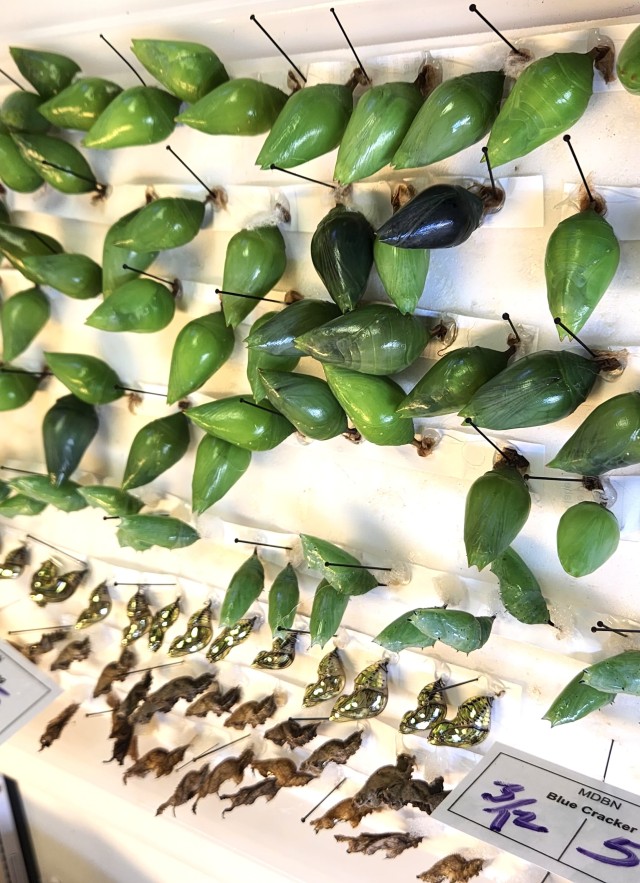
Published on March 15, 2024
From March 17 to August 25, NHM's Butterfly Pavilion is kept aflutter with weekly deliveries of butterfly pupae—what are technically known as chrysalises, from the Greek word for ‘gold’.
Butterflies are only the last stage of these icons of metamorphosis, and most only spend about two weeks as the flying dabs of color we ooh and ahh at. Migratory species like monarchs can live several months as adult butterflies (it’s a long trip from Mexico to Canada) but most other species will spend more of their time as caterpillars stuffing their mouth parts with food and then in the chrysalis stage turning all that food into their new butterfly bodies. We all know that. What you might not know is that those chrysalises can be as stunningly beautiful as their flying finales.
And they move!
Suspended from a branch by a small amount of silk, chrysalises like these only have so many ways to defend themselves from predators. Some use crypsis—camouflaged colorations and patterns that help them blend into their surroundings. Others use bright shiny colors and striking patterns to signal that they wouldn’t be good to eat.
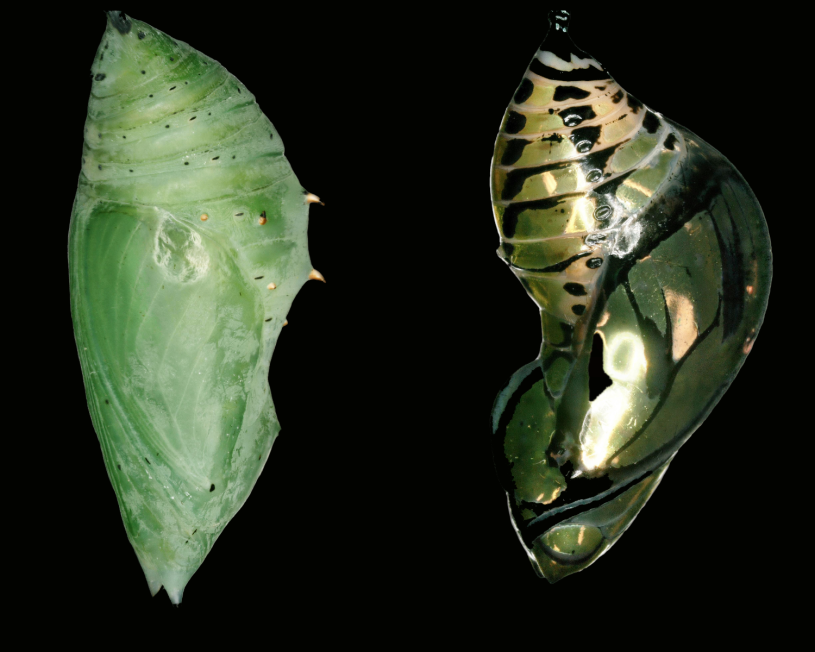
Our Living Collections team cares for the butterfly pupa until they’re ready to be released into the Pavilion and visited by NHM Guests.
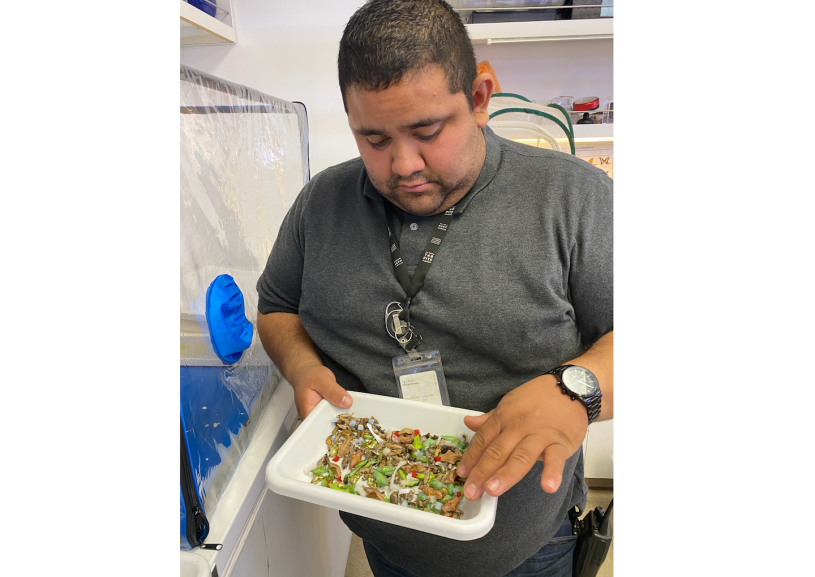
During the Butterfly Pavilion’s seasonal run, NHM’s Living Collections team receives weekly shipments of these cryptic and crazy beautiful chrysalis from butterfly farms. To bring tropical species to the Pavilion, NHM works with butterfly farms in Central America, and these farms do more than just grow butterflies. Our first partner is El Bosque Nuevo in Costa Rica, where half of its 285 hectares have been preserved and half reforested. Butterflies like the stunning blue morpho (Morpho peleides) need the plants and climate they’ve evolved in to grow, so our Central American partners make it their business to protect as much acreage of native habitat as they can.
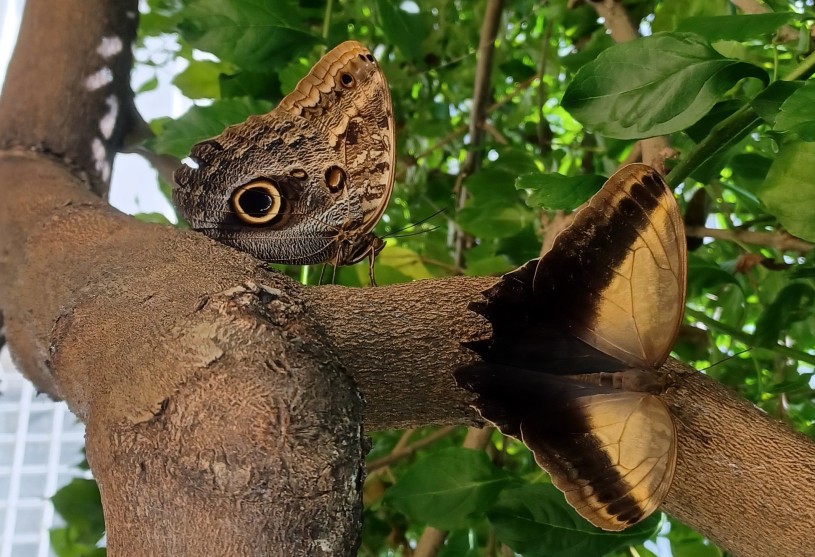
Green Hills Butterfly Ranch in Belize stunned Living Collections Program Manager Lisa Gonzalez with more than just the piercing ‘gazes’ of their owl butterflies (genus Caligo) or see-through glasswings (Greta oto). At 250 acres, Green Hills is the largest butterfly ranch in Belize. The ranch also plays host to the incredible biodiversity that undergirds its winged wonders. From orchids to hummingbirds and even jaguars, because Green Hills preserves its land for butterflies, other animals and plants have found a habitat. More than 300 species of birds have been recorded on the ranch, along with amazing mammals like anteaters and ocelots. Not only are they conserving land in Belize’s tropical rainforest, but they’re also centering women in their great conservation work.
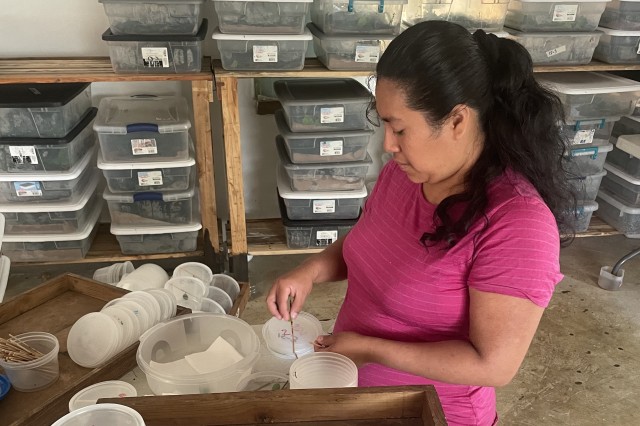
A worker cares for caterpillars at Green Hills Butterfly Ranch
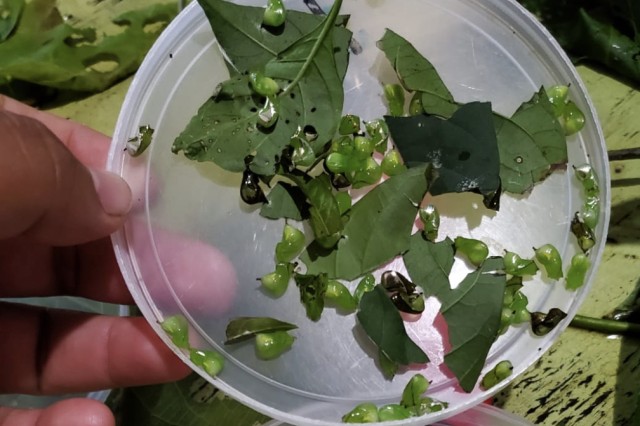
Glasswing eggs from Green Hills Butterfly Ranch
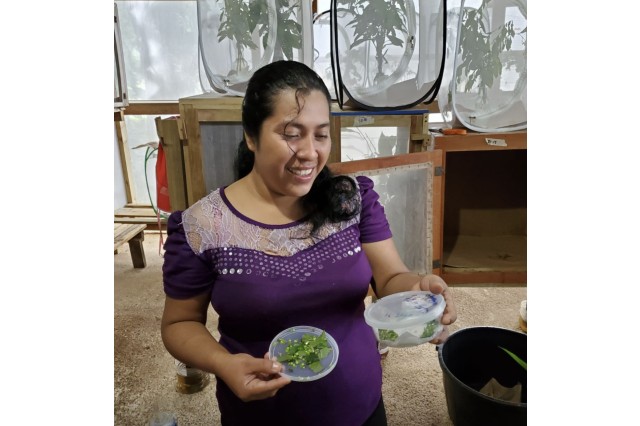
Green Hills Butterfly Rancher tallies over 100 glasswing eggs
1 of 1
A worker cares for caterpillars at Green Hills Butterfly Ranch
Glasswing eggs from Green Hills Butterfly Ranch
Green Hills Butterfly Rancher tallies over 100 glasswing eggs
Like their famously transforming butterflies, these farms help their staff metamorphose into professional conservationists, building skills in wildlife conservation and butterfly care. Forests and other natural habitats are too often seen as a natural resource to be exploited destructively, but farms like Green Hills Butterfly Ranch help locals protect their forests while earning a living. Putting women at the center of the project helps ensure that as the Green Hills continues to grow and more of these farms sprout up across Central America, more women will have the expertise and experience to lead these conservation efforts.
The next time you’re thinking about fluttering into our Butterfly Pavilion, remember that you’re helping support their native habitats while supporting your own butterfly habit.
Photo by Tyler Hayden
An unwrapped package of chrysalises at NHM's insectary
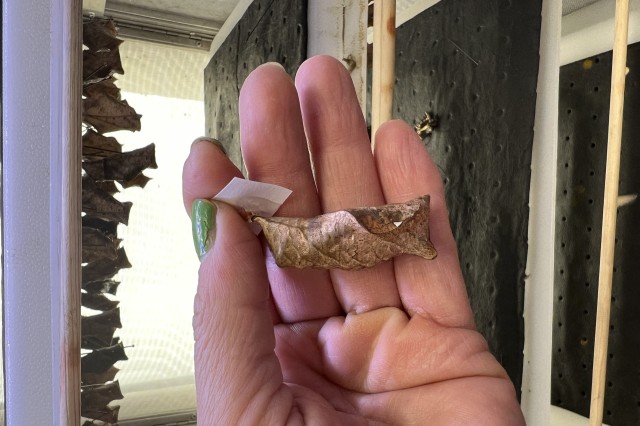
Photo by Lisa Gonzalez
This freshly delivered owl butterfly chrysalis would blend right in on a tree
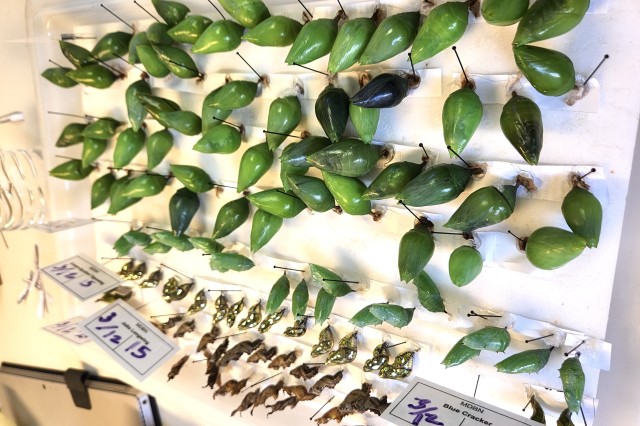
Photo by Nicole Valencia
The chrysalises are unpacked and sorted until it's time for the adult butterflies to emerge and join the Pavilion
1 of 1
An unwrapped package of chrysalises at NHM's insectary
Photo by Tyler Hayden
This freshly delivered owl butterfly chrysalis would blend right in on a tree
Photo by Lisa Gonzalez
The chrysalises are unpacked and sorted until it's time for the adult butterflies to emerge and join the Pavilion
Photo by Nicole Valencia
“After attending a talk given by Robin and Louise Greaves of Green Hills Butterfly Ranch, I was deeply impressed by their commitment to involve the local community as part of their conservation mission, in particular with the ways in which they support women," said Gonzalez. "Women with children are given necessary accommodations so that their family commitments do not prohibit employment, and are treated equitably by being trained for leadership positions.”
“The economic activities of live pupae export, being very labor intensive, generates significant employment opportunities in rural areas of Belize, enabling us to employ large numbers of local people in a conservation-oriented profession,” said Robin Greaves, owner of Green Hills.
